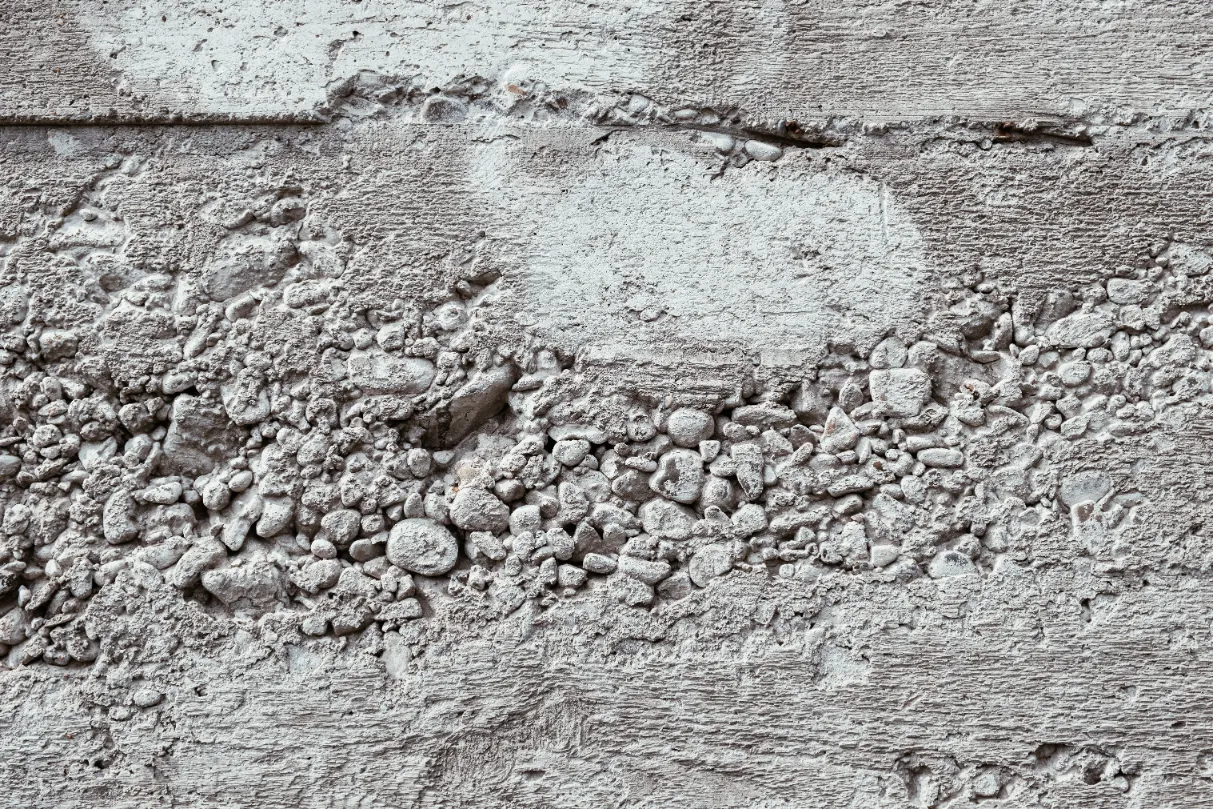Aggregate Segregation: A Hidden Risk to Concrete Structures
Aggregate segregation is a serious issue that affects the strength, durability, and appearance of concrete. When the coarse and fine materials in a concrete mix separate, it creates weak spots that can lead to cracks, uneven surfaces, and structural failures. Segregation often occurs during mixing, transportation, or pouring and can compromise the performance of even the most well-designed structures.
At The Mudjacking Contractor, we understand the challenges segregation creates and specialize in concrete repair to restore integrity and reliability. Our experts bring years of experience and cutting-edge techniques to every project, ensuring long-lasting results you can trust.
Prevent Costly Concrete Failures—Contact The Mudjacking Contractor Today for Expert Solutions!
What is Aggregate Segregation in Concrete?
Aggregate segregation in concrete occurs when coarse and fine materials in a mix separate unevenly. Aggregate segregation is a common issue that impacts the uniformity and quality of concrete. When the components of a concrete mix—such as coarse aggregates, fine aggregates, and cement paste—separate during mixing, transportation, or pouring, the resulting structure becomes weak and prone to defects.
Segregation compromises the concrete’s strength, durability, and appearance, leading to weak spots, cracks, and potential structural failures. This issue often arises due to improper handling, excessive vibration, or inconsistent mixing techniques, and it can significantly impact the performance of both small and large-scale construction projects.
Causes of Aggregate Segregation in Concrete
Aggregate segregation occurs when materials in a concrete mix separate unevenly, compromising the mix’s uniformity and structural integrity. Understanding the causes of segregation is crucial to preventing this issue and maintaining the quality of your concrete.
Below are some common causes:
- Improper Mixing Techniques
- Inadequate mixing times or incorrect equipment settings can lead to uneven distribution of coarse and fine aggregates.
- Excessive Vibration or Compaction
- Over-vibrating the concrete mix during placement can force heavier aggregates to settle, causing segregation.
- High Water-to-Cement Ratio
- Excessive water dilutes the cement paste, allowing aggregates to separate and sink.
- Improper Transportation
- Long transport times, abrupt movements, or unsuitable equipment can disturb the mix’s uniformity.
- Pouring from Excessive Heights
- Allowing concrete to fall from a significant height during pouring can cause the coarse aggregates to segregate from the finer materials.
- Oversized or Insufficient Aggregates
- Using aggregates that are too large or poorly graded increases the likelihood of separation during mixing or pouring.
- Harsh Handling Techniques
- Dropping or forcefully shoveling concrete can disrupt the mix’s cohesion and lead to segregation.
By identifying and addressing these causes, you can ensure a consistent and reliable concrete mix, reducing the risk of structural failures and costly repairs.
The Dangers of Aggregate Segregation in Concrete
Ignoring aggregate segregation can result in costly repairs and compromised structural performance. As previously stated, aggregate segregation occurs when the coarse and fine materials in a concrete mix separate, leading to uneven distribution of strength. Over time, the segregation of aggregate can weaken concrete, making it prone to cracks, uneven surfaces, honeycombing, and structural failures.
Neglecting segregation can lead to:
- Reduced load-bearing capacity.
- Premature wear and tear.
- Water infiltration through weak points, further accelerates damage.
Addressing these risks early ensures that your concrete maintains its strength, durability, and visual appeal, safeguarding the integrity of your structure for years to come.
Benefits of Addressing Aggregate Segregation in Concrete Quickly
Resolving aggregate segregation early can restore your concrete’s strength and longevity. Correcting segregation is important for maintaining concrete’s integrity and performance. When the materials in your concrete mix are properly distributed, you gain a structure that is not only stronger but also more resistant to environmental and structural stressors.
Key benefits include:
- Improved Durability: Properly repaired concrete can withstand higher loads and last longer.
- Uniform Appearance: Eliminating segregation ensures a smooth and consistent surface finish.
- Enhanced Load-Bearing Capacity: Addressing segregation prevents weak points, creating a stable and reliable foundation.
Understanding aggregation vs segregation highlights the importance of avoiding material separation in your mix. By prioritizing proper techniques and expert intervention, you can prevent future failures and protect your investment.
How to Prevent Aggregate Segregation in Concrete
Proper handling and preparation are key to preventing aggregate segregation in your concrete mix. To ensure the integrity of your concrete, it is crucial to take steps that minimize the risk of aggregate segregation. Follow these best practices to maintain a well-mixed, cohesive concrete blend:
- Mixing: Use the correct ratio of coarse and fine aggregates to prevent material separation. Ensure thorough mixing to achieve uniformity.
- Transportation: Avoid prolonged transport times, and use equipment designed to maintain consistency during transit.
- Pouring: Pour concrete at the correct height and in controlled layers to reduce separation.
Partnering with experienced contractors can also significantly reduce risks. At The Mudjacking Contractor, our expertise in concrete stabilization and repair ensures that your project benefits from industry-leading techniques and meticulous attention to detail.
Final Thoughts on Aggregate Segregation in Concrete
Aggregate segregation in concrete can lead to structural failures if not addressed promptly. Segregation compromises the strength, durability, and appearance of concrete, putting your structure at risk of costly damage. By addressing these issues early, you can protect your investment and maintain a safe, reliable foundation. With over 20 years of experience serving Long Island, Brooklyn, and Queens, The Mudjacking Contractor is the trusted name in mudjacking, concrete leveling, and concrete repair and stabilization. Our team combines advanced techniques with unparalleled craftsmanship to deliver results that last.
Get Your Free Concrete Assessment Today—Call The Mudjacking Contractor for Reliable Solutions!

